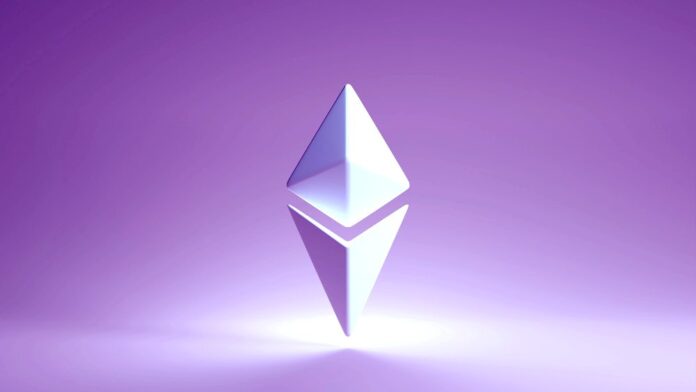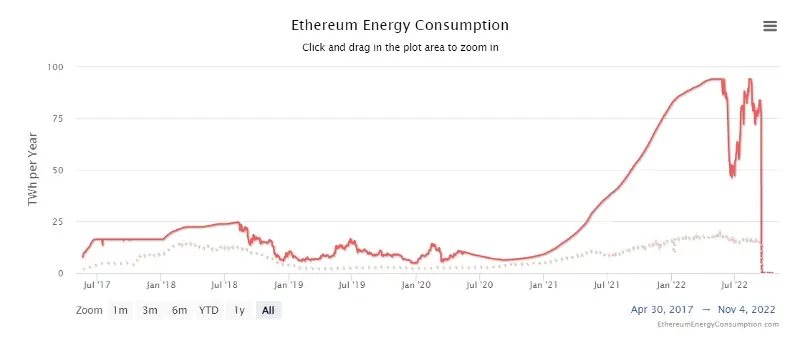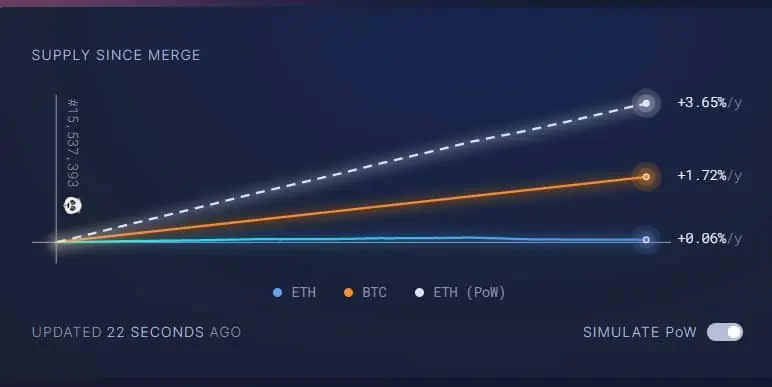
After The Merge, Ethereum consumes 99% less energy and becomes a deflationary network, what other changes have occurred in ETH?
It's been a month since Ethereum implemented The Merge, going from being a Proof-of-Stake network based on mining, to becoming a Proof-of-Stake based on validation nodes and ETH staking.
For weeks, the crypto community held its breath waiting for the moment of fusion. In the end, the transition was smooth and there were no big problems or mistakes. Ethereum marked a milestone in the history of blockchains, changing its consensus mechanism on the fly.
The changes that The Merge has introduced go beyond its consensus mechanism and, some of them, could have long-term consequences for the network. Let's see what the main changes are and what effect they have had on ETH.
Less energy consumption
By abandoning mining, the first change that the network has experienced has been a drastic decrease in energy consumption.
After the merger, Ethereum went from consuming 80 TWh per year at about 0,01 TWh, according to data from Digiconomist.

With Proof-of-stake, the carbon footprint of one transaction on Ethereum is equivalent to that of 22 transactions on the VISA network, which is a drastic change from the previous model.
However, this calculation is not entirely correct, since transactions are not directly related to energy consumption and, furthermore, transactions that take place at layer 2 are not taken into account.
More validators for the Ethereum network
Ethereum miners left the network, which is now in the hands of validators, who run the network and are responsible for processing transactions.
The participation rate of network validators, a metric to watch how many validators are expected to verify the blocks, is currently above 99%, which means that almost all validators They are online processing new blocks.
According to data from beaconcha.in, in just one month since The Merge, validators have gone from 420.000 to 435.000, with over 13,2 million ETH locked in staking in total.
The Merge and a centralization problem
One of the big disadvantages of the merger has been that Ethereum has lost part of the independence and decentralization.
This is because only four big companies They monopolize almost 50% of Ethereum validation nodes. Lido Finance, Kraken, Binance and Coinbase They control more than 55% of the nodes.
Why has this happened? Unlike other Proof-of-Stake mechanisms, Ethereum has a system called “liquid staking”, which allows staking a portion of the ETH required to control a node (in this case, 32 ETH is required to be a validator) to a staking provider and leave control in their hands.
It is expected that the centralization problem will be solved after the implementation of the new Shanghai update, which will allow the withdrawal of ETH locked in staking, which will mean the beginning of greater competition.
Be that as it may, this centralization of the validation process has generated a lot of criticism among the community, since the network becomes more vulnerable to manipulation and censorship. In fact, the United States Securities and Exchange Commission (SEC) even granted the surveillance and regulation of Ethereum transactions, considering that ETH is a value and that most of its nodes are located on US soil.
Increased risk of censorship
On the other hand, the use of efficiency improvement software such as MEV Boost, an application that allows you to obtain a market for maximum extractable value (MEV), by the validators worries the community.
This software allows validators and block builders to run what is known as a “relay” that tells Ethereum validators which transactions to prioritize in block production to receive the highest rewards (those that have a “maximum extractable value”).
The most used MEV Boost is that of Flashbots, which is known for censoring transactions, refusing to process any transaction that has to do with Tornado cash following sanction by the United States Office of Foreign Assets Control.
This represents a problem of censorship on the network, since currently the 47% of Ethereum blocks are built using Flashbots.
Less issuance of ETH after The Merge
But not everything is bad; since the merger, The amount of Ether created has fallen by almost 90%. This is because the rewards of node validators are substantially lower than those of miners.
Since the implementation of The Merge, there have been 6.500 ETH. If the previous mechanism had continued, 400.000 ETH would have been issued in the same period, according to data from Ultrasound.money.

Although the issuance of Ether is still inflationary, If activity on the network grows and more ETH is burned during transactions, the network will eventually become deflationary, which could be beneficial for the price of the token.
What awaits Ethereum in the future?
The Merge is just the first step, according to Vitalik Buterin, founder of Ethereum, with the implementation of the Merge, the network is only at 55% of its total development. Along the way, there are still: Surge, Verge, Purge and Splurge, so we will have to wait to find out what the future holds for the network.
For now, we have to wait until 2023, when the Shanghai update will be implemented, which should solve some problems such as the current centralization, by finally releasing the ETH locked in the nodes, which is expected to improve competition. However, the main problem will remain the barrier of the 32 ETH needed to control a node, something that is out of reach for most of the community.
At the same time, a sharding system will be introduced for the first time in Ethereum, which will reduce transaction times as well as their cost.
[hubspot type=cta portal=20298209 id=38fb28e1-1dc1-40e3-9098-5704ca7fcb07]



